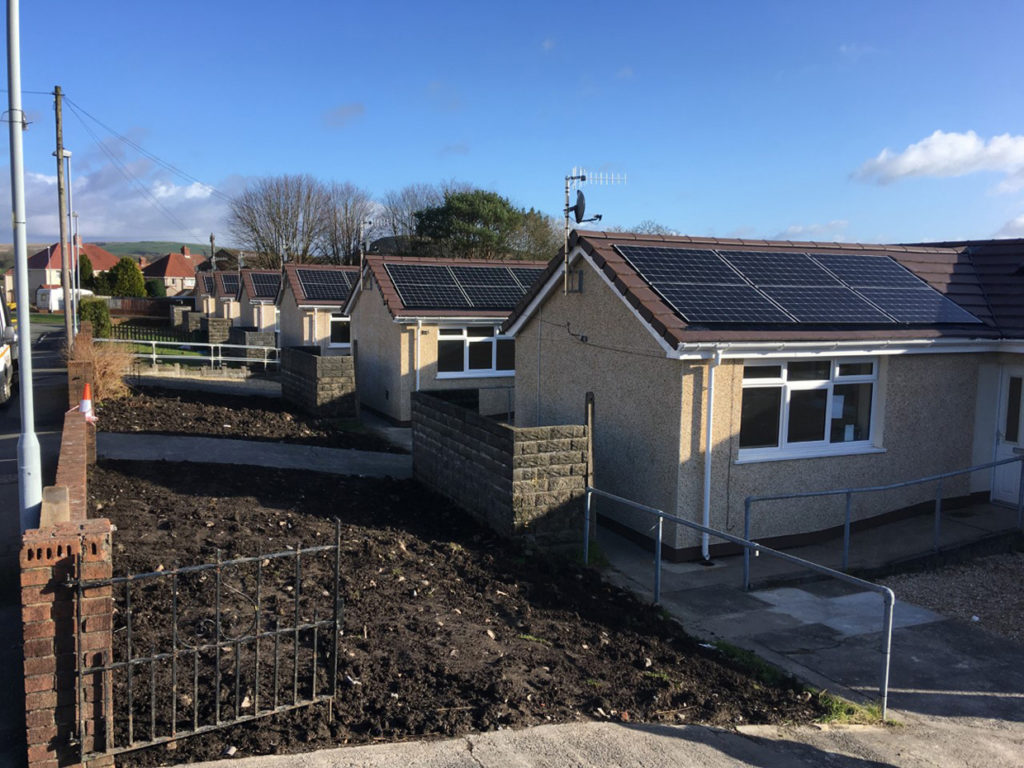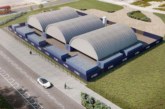Swansea Council and the Welsh School of Architecture won the Domestic Project of the Year category at this year’s CIBSE Building Performance Awards for the energy efficiency retrofit of six bungalows. The project builds on the learning from similar retrofit schemes undertaken by the school, as Juliet Rennie of CIBSE explains.
As residential energy efficiency retrofits go, the results of a collaboration between Swansea Council and Cardiff University’s Welsh School of Architecture (WSA) in refurbishing a terrace of six council bungalows are impressive. The home’s carbon emissions are down 94%; average annual energy consumption is only 5MWh, significantly lower than the UK average of 15MWh; and the home’s Energy Performance Certificate rating has improved from a G (the worst) to an A (the best).
This is a refurbishment that demonstrates what is possible when retrofitting local authority homes for energy efficiency. Particularly when you consider that the retrofits were carried out using off-the-shelf materials and technologies. What is more, the homes tackled under this scheme were not exceptionally bad; in fact, they are described by the WSA as being “typical of many Welsh homes” in that they are off the gas grid and have been constructed with poorly insulated windows, walls, and roofs, making them expensive to heat and prone to damp and mould.
Unsurprisingly, the refurbishment won Project of the Year – Domestic, at this year’s Chartered Institute of Building Services Engineers (CIBSE) Building Performance Awards. The judges were clearly impressed with the approach taken by the WSA saying it “will have far-reaching impacts in Wales and beyond”.
 Whole house approach
Whole house approach
The WSA’s approach builds on learning from earlier residential retrofits, including work the school had undertaken in collaboration with Wales and West Housing (another CIBSE award winning project) where it developed its integrated approach to energy efficiency improvements. This ensures retrofit decisions are based on the most appropriate interventions for each home by considering how a mix of technologies and interventions perform as an entire system.
Professor Joanne Patterson, Professorial Research Fellow at WSA, terms this “a whole house approach”. She says its success depends on data-driven decisions. WSA’s starting point for each residential retrofit is its Practical Retrofit Early Stage Survey (PRESS). This is a systematic method of collecting information developed by the school to help it understand how residents use their home and the level of comfort they expect.
Data model
Crucially, PRESS is supported by a detailed study and monitoring of the building fabric. This is used to identify existing performance issues; it includes airtightness testing, fabric U-value measurement, and the use of a thermal imaging camera to identify areas of excessive heat loss that may need additional treatment.
Data obtained from the monitoring is used by the WSA to calibrate a digital model of the home. The model allows the school to virtually test different combinations of fabric improvements and technologies to assess how these perform holistically. The home’s energy use, carbon emissions, and cost of energy is calculated for each combination of measures. Outputs from the model enable potential energy savings to be assessed against capital costs.
In determining which interventions are appropriate, the school first focuses on improvements to the building fabric through the addition of internal or external insulation to minimise heat losses before considering the most appropriate heating system. Finally, the impact of adding photovoltaic panels (PVs), a mechanical ventilation system with heat recovery (MVHR) and the benefit of energy storage batteries are assessed.
 Property improvements
Property improvements
In Swansea, fabric energy efficiency improvements to the bungalows included external wall insulation, a reduction in the glazed area, installation of high specification double-glazed windows and the addition of loft insulation. Technological additions included: a ground source heat pump (GSHP), photovoltaic panels on the roof and a large battery capable of storing surplus electricity generated by the PVs. The properties were also fitted with an MVHR system to provide a constant source of energy efficient ventilation.
Retrofitting this quantity of energy efficiency improvements can be very intrusive for residents. So, to help minimise the impact of the works, the teams from Swansea Council and WSA decided to implement the retrofit in two phases: fabric efficiency improvements took place over one winter with the installation of the energy supply and storage technologies the following year.
Post-retrofit monitoring by the WSA ensured the technologies were working as predicted, that they had been commissioned correctly and that their operation had been optimised. In addition, to help residents use the technologies effectively, the WSA produced a simple user guide and Swansea Council’s energy manager also spent time explaining the operation of the technologies to residents.
 Resident feedback
Resident feedback
Following completion of the works, residents were interviewed for their perceptions on the impact of the retrofit. Overall feedback was positive with thermal comfort in both summer and winter scoring top marks; the availability of daylight also received top marks, that despite an increase in the depth of the window reveals because of the addition of external wall insulation. However, the issue of noise from the new GSHP compressor and the new MVHR system were both identified as audible, although neither was considered by residents to be intrusive.
In terms of energy use, post retrofit monitoring over two years by WSA showed that from March to September (out of heating season and when days are longer) 95% of the home’s energy was provided by the combination of PVs and battery, which meant that once standing charges had been excluded, resident’s energy bills for the supply of electricity and heating hot water were just £3.00 per month. No wonder the CIBSE awards judges were impressed.










